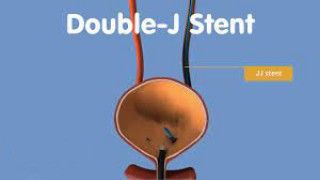Laparoscopic TAPP Inguinal Hernia Repair: The Efficacy of Ipsilateral Port Placement
Add to
Share
814 views
Report
10 months ago
Description
Optimizing Laparoscopic TAPP Inguinal Hernia Repair: The Efficacy of Ipsilateral Port Placement Laparoscopic Transabdominal Preperitoneal (TAPP) inguinal hernia repair is a minimally invasive surgical technique that has gained widespread acceptance due to its reduced postoperative pain, quicker recovery times, and lower recurrence rates compared to open surgery. One of the critical aspects of optimizing this procedure is the strategic placement of ports, which can significantly influence the surgical field's accessibility, operative time, and overall outcomes. This article explores the efficacy of ipsilateral port placement in laparoscopic TAPP inguinal hernia repair and its impact on surgical efficiency and patient outcomes. Understanding TAPP Inguinal Hernia Repair TAPP inguinal hernia repair involves creating a pneumoperitoneum to access the abdominal cavity, followed by the placement of trocars (ports) through which the laparoscope and surgical instruments are introduced. The hernia defect is then visualized and repaired with a mesh placed in the preperitoneal space. The standard approach typically involves placing ports on both sides of the abdomen to provide a triangulated view and facilitate instrument manipulation. Ipsilateral Port Placement: An Innovative Approach Ipsilateral port placement refers to positioning all the ports on the same side as the hernia defect. This technique contrasts with the conventional approach, where ports are usually placed on both sides of the midline. The ipsilateral method aims to simplify the procedure by potentially reducing the complexity of instrument handling and enhancing ergonomic efficiency. Advantages of Ipsilateral Port Placement 1. Enhanced Ergonomics: By placing all ports on the ipsilateral side, the surgeon can maintain a more comfortable and natural hand position, reducing fatigue and the risk of musculoskeletal strain. This ergonomic benefit can be particularly advantageous during lengthy procedures. 2. Improved Instrument Coordination: Ipsilateral port placement may facilitate smoother instrument movements and better coordination, as the instruments are introduced from a consistent side. This can lead to more precise dissection and mesh placement. 3. Reduced Operative Time: Streamlining the surgical field with ipsilateral ports can potentially decrease operative time. Faster procedures reduce anesthesia duration, which is beneficial for patient safety and recovery. 4. Minimized Learning Curve: For surgeons experienced in laparoscopic techniques but new to TAPP inguinal hernia repair, ipsilateral port placement can simplify the learning process. The technique's straightforward nature allows for quicker mastery, leading to consistent and reproducible outcomes. Potential Challenges and Considerations 1. Limited Angles and Access: One of the primary concerns with ipsilateral port placement is the potential limitation in angles and access to the contralateral side of the abdomen. This can make it challenging to visualize and address bilateral hernias effectively. 2. Increased Clashing: Instruments introduced from closely positioned ipsilateral ports may be prone to clashing, which can hinder smooth surgical maneuvers. Surgeons need to be adept at handling instruments to mitigate this issue. 3. Patient-Specific Factors: Anatomical variations among patients, such as body habitus and hernia size, can influence the feasibility and efficacy of ipsilateral port placement. A tailored approach considering individual patient characteristics is essential. Clinical Evidence and Outcomes Several studies have investigated the outcomes of ipsilateral port placement in TAPP inguinal hernia repair. Evidence suggests that this technique can achieve comparable, if not superior, results to the conventional approach in terms of operative time, complication rates, and patient satisfaction. However, the data also highlight the importance of surgeon experience and skill in maximizing the benefits of ipsilateral port placement. Case Studies and Comparative Analyses 1. Operative Time: Comparative analyses indicate that ipsilateral port placement can reduce operative time by approximately 10-15% compared to the conventional approach, particularly in unilateral hernia repairs. This reduction is attributed to improved instrument handling and reduced need for port adjustments. 2. Postoperative Pain and Recovery: Patients undergoing ipsilateral port placement often report lower postoperative pain scores and faster return to normal activities. The minimized trauma to the abdominal wall from fewer ports and reduced instrument manipulation likely contributes to these favorable outcomes. 3. Recurrence and Complications: Recurrence rates and complication profiles appear to be similar between ipsilateral and traditional port placements. However, meticulous surgical technique and appropriate patient selection remain crucial to minimizing adverse outcomes. Conclusion Ipsilateral port placement in laparoscopic TAPP inguinal hernia repair presents a promising modification to enhance surgical efficiency and patient outcomes. While the approach offers several ergonomic and practical benefits, it requires careful consideration of patient-specific factors and surgeon expertise. As evidence continues to accumulate, this technique may become a standard practice for optimizing laparoscopic hernia repairs, contributing to improved surgical experiences and outcomes for patients. Further research and long-term studies will be essential to solidify its place in the surgical repertoire and refine its application in diverse clinical scenarios.
Similar Videos






